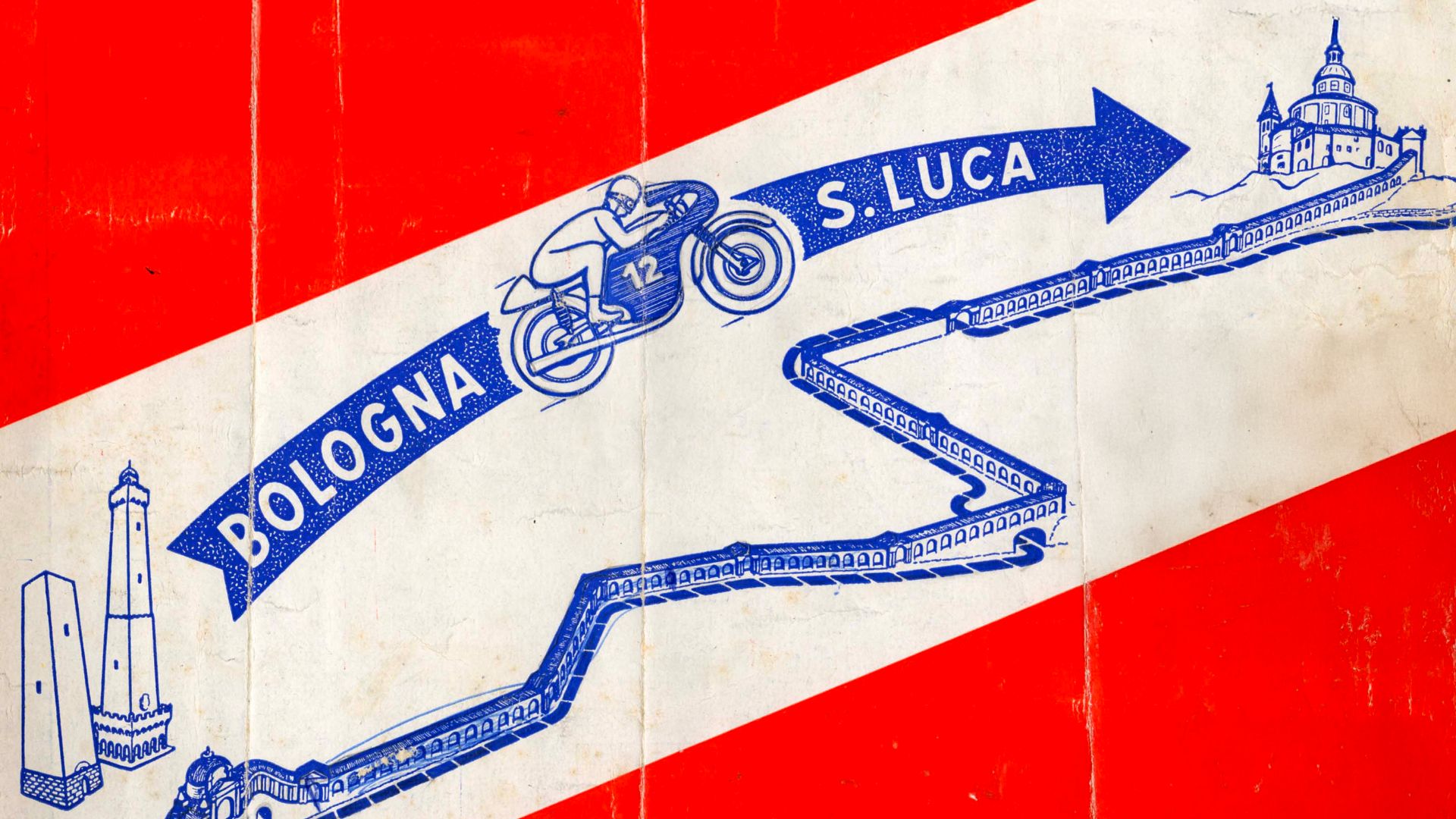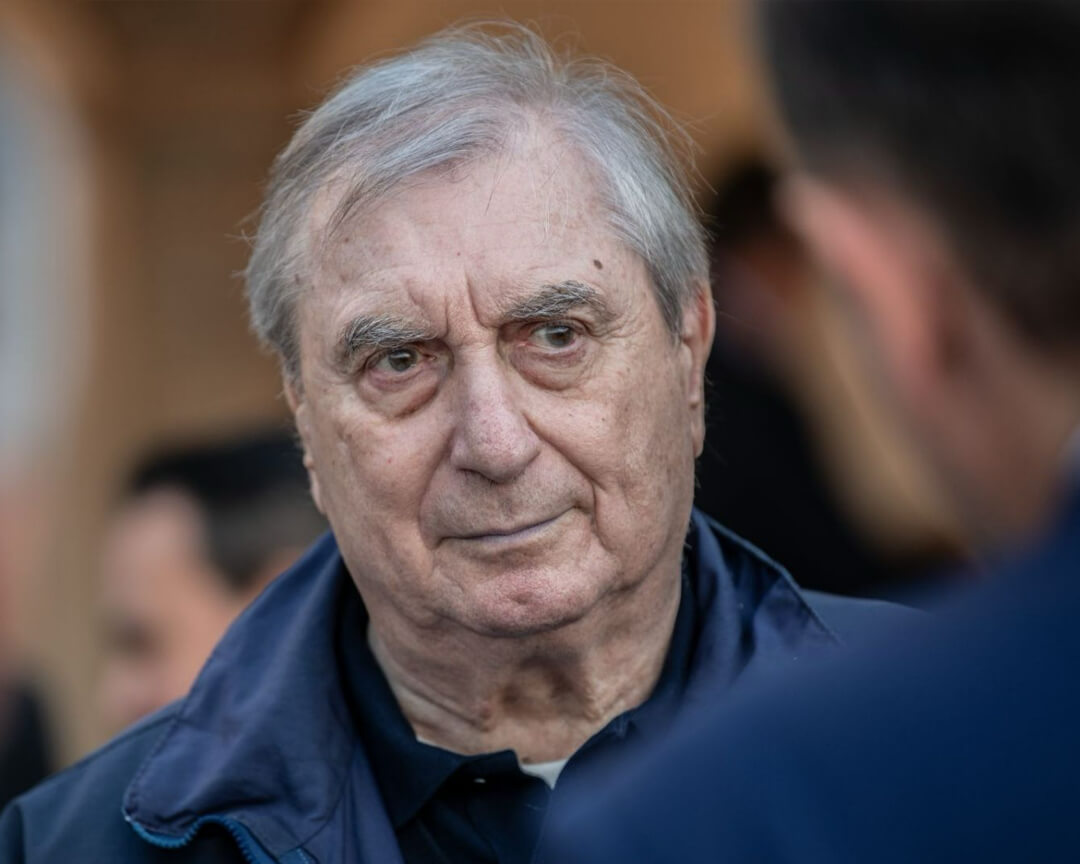


Dr Claudio Costa, known by his most avid fans as “dottorcosta”, is a legendary figure in the motorcycling world. Founder of the Clinica Mobile, he has dedicated his life to safety and well-being on the track, driven by a unique, deeply empathetic approach towards sports medicine.
Now, after a lifetime of challenges and success, Claudio Costa looks back over the journey that shaped him into the iconic figure that we know today, transforming his love for motorcycling into a mission to provide care and support for its leading players.
An introspective recount, giving us an intimate insight into the real man behind the legendary “dottorcosta” and a deeper understanding of the fundamental role he played in revolutionising the history of motorcycling.


Dr Costa’s journey starts in his homeland and with the people who live there: a reflection on the meaning of the Motor Valley and the origins of the region, on the interaction between the ingenious minds of its inhabitants and the technological progress it spearheaded. A land where out of pure passion, visionary ideas and pioneering figures were born.
“The first question we have to ask is this: why was all of this born here exactly, in Emilia Romagna? Over the centuries, Emilia Romagna has historically been a rural area. A region shaped by people living in close contact with the astounding wonders of nature. But when their paths were intersected by innovation, mechanics and technology, it unleashed within them an astounding ingenuity. But more than that, the people of Romagna are unique in another way: in their overwhelming sense of passion.
I witnessed first-hand the genius and madness of my father. He created the Imola Circuit, and he did so based on his ingenuity and passion, in a way that responded to the needs of those times. It’s all down to this madness and ingenuity that was within the Romagnoli people, including my father.”
Ingenuity and madness: there’s no doubt that Checco Costa, founder of the Autodromo di Imola and organiser of some of the most iconic races in the history of modern motorcycling was one of the great visionary geniuses of the Emilia Romagna region. And his legacy is still alive in the memories of Dr Costa.
“My father didn’t just create the Imola Circuit, he brought us the greatest races in the history of motorcycling: the Coppa d’Oro, the Conchiglia d’Oro and the Gran Premio delle Nazioni. On the 23rd of April 1972, he organised the very first 200 Miglia, bringing America over to the banks of the river Santerno. He revolutionised the entire racing sector: he influenced riders to change their suits, to have their names written on the back. Push starts were replaced with electric starts. He brought motocross to Italy and hosted 15 World Championships.
My father created modern motorcycling, the one we know and love today with the likes of Bagnaia, Bastianini, Marquez, Acosta, Martìn. An explosion of ingenuity: that was my father.”
Empathy and frustration over a harsh reality he found difficult to accept were the basis for several inventions that would go on to revolutionise the concept of safety on the track.
“One day, when I was young, I was taken onto a real racing circuit for the first time. From that point onwards, I came to know and love the riders of that world. And then I discovered the tragedy: I learned that riders would often be killed on those tracks.
I didn’t like it, I was really, hugely frustrated by a reality that didn’t sit well with me. I liked to imagine that the riders would be ok, but it wasn’t enough. And it’s thanks to an emotional mechanism we call empathy that I started to discover pain, and that I realised that the world is also full of people who are suffering. At some point, I decided I wanted to do something to change it. I put resuscitators on the track, at every bend, so that if a rider were to have an accident, even a serious one, they could be saved.
That’s how during the first 200 Miglia, the Daytona of Europe on 23 April 1972, the very first medical and emergency service was born, which in a way pre-empted the 118 ambulance service. And it was from there, and from the pain I felt as I clutched Jarno Saarinen and Renzo Pasolini to my chest, who died during a tragic accident on 20 May 1973 in Monza, that the Clinica Mobile was born.
Emotions can transport us to another place, inviting us on a journey into the depths of our minds and memories. Dr Costa takes us to Japan, beneath the cherry blossom, as he retraces the tragic day that Daijiro Kato was taken to the Medical Centre on the Suzuka circuit.
“There’s a moment that I relive often in my memories. I see the image of the cherry blossom in Japan, and amongst the foliage, there’s a scene that has come back to me several times over the years. It’s the memory of that day in Suzaka, when Kato was taken to the circuit’s Medical Centre, covered by a sheet because they thought he was dead. I was there, and in the face of tragedy, I peeled back the sheet and did everything I could to save him. I tried to revive him, to call him back to life and our wonderful friendship. And I succeeded. It filled me with euphoria, intoxication, joy.
Two weeks later he passed away. I’ve never felt pain like it. But at the same time, I’d never experienced a more intoxicating moment than when his heart started beating again, even if it was just for a little while. And that’s the most profound significance of my job. Life is like a cherry blossom: naturally perfect, but only for one spring.”
A story that reminds us how Dr Costa wasn’t just a doctor for so many riders and legends in the motorcycling world, but how his dedication and incredible emotional strength led him to forge deep relationships with everyone who ever stepped foot into his Clinica Mobile, even if only once.
It’s no secret that I had a deep connection with riders like Melandri, Capirossi and Simoncelli, for whom I could only stop crying when I had no tears left to cry.
I’ve never expressed a preference for any of those who I’ve been lucky enough to meet on the track, just like a mother never tells her children who her favourite is. I’ve always refused to do this, except for in one case, and that case was “Mick” Doohan. When we were in the Netherlands, Mick Doohan risked losing not only a leg, but his life. I took him away, I bound his legs, and using a hyperbaric chamber we managed to save him from what could have been a tragedy. And he then got up to win five titles in the World Championship. It’s a chapter of my story that I always carry with me in my heart.”
Another page in the story involves Ayrton Senna. An encounter that was kept a secret, years before the tragic events of 1 May 1994, which deeply affected Dr Costa and forged an unbreakable bond between the two: a bond that after all these years, still lives on fiercely in his mind.
“The Senna chapter is another painful one. I’ve seen a lot of things in the world of motorcycling, and the tragedies have all left a mark on me, bringing out two profound feelings: sadness and desperation.
When I think of 1 May 1994, it takes me back to an encounter that took place several years prior, when a young photographer, Angelo Orsi, approached me and told me Senna wanted to meet me in person. Angelo took me to his hotel, and when we met, it was a real storm of emotions. He asked me for lots of advice on training, for a whole load of information on how to stay in perfect shape. At the end of the meeting, we hugged, and I still keep that hug with me in my heart.
He told me that we had to keep that meeting a secret. I wanted to shout it out for all the world to hear, to tell everyone that such a supreme rider, a legend, had come to me. That I, Dr Costa, had become friends with this legend. But I managed to keep it a secret. When Ayrton was killed on the Tamburello Corner on the Imola Circuit, I was terribly shaken by the fact that I would never hear his voice again asking me for help. In the bitterness of that moment, all I had left was the sweet taste of knowing I’d kept his promise.”
Dr Costa has a dynamic spirit that knows no limits, a mind that refuses to stop planning new adventures. He concludes his story with one sole desire: to return to a place steeped in memories.
“There’s still a lot I’d like to do. But it’s through my imagination now, because physically my body won’t let me.
I have one desire, and once again it’s connected to my memories of my father. When I was small, he would take me to see the 24 Ore di Le Mans, and for 24 hours I would in the Ferrari box watching every single race. But whenever we’d go to a circuit, my father was always really insistent on showing me the surrounding area as well, he wanted to show me the world. Near Le Mans, there’s a place I’m very fond of: Mont Saint Michel. Over the years, I’ve travelled all around the world, but if I had to choose one last place to go to, I’d go back there.”
A journey into the heart of motorcycling and one of its greatest protagonists: “dottorcosta”’s story is one of humanity and innovation, of a passion that didn’t just revolutionise safety on the track, but injected a whole new sense of empathy into the racing universe. Emotions that have guided every step of his career, which for Dr Costa was clearly more than just a job.
Dr Costa’s story has a strong, clear message: one that is now permeating the world of social media too. With the recent launch of his official channels, an even wider audience of loyal fans will now be able to appreciate this piece of motorcycling history and discover the real man behind the legend who is “dottorcosta”.
Area involved: